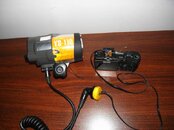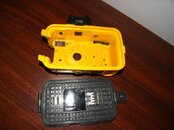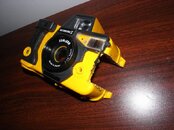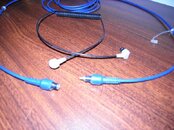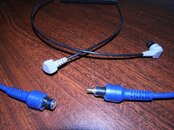K
KeithG
Guest
I am currently McGyvering my spare Sea & Sea DX1G housing to support manual sync cords.
I bought the standard DX1G & YS110 package several (many?) years ago as my starter kit for under water photography after I decided to abandon my high end Amphibico Sony video rig (still complete, gathering dust, 50 lbs heavier than a Go Pro, any reasonable offers accepted ...).
As a slow learner, it took me a while to discover that the YS110 strobes were not "perfect" when used as optical TTL strobes with the DX1G. I still love the DX1G - and continue to learn what it is capable of. I take lots of shots and come away with many awesome shots every trip. But I wish it was more repeatable.
My last few dive trips have made me love the DX1G just a little more and hate the YS110 just a lot more. Too many times when the flash totally washed out the shot - this led to a hankering for the old days of manual control.
So we are off to see the wizard. The wonderful wizard of manual sync cords. I came from the world of using a Nikon FE above water in manual mode.
Progress to date has been very encouraging. The Ricoh GX100 (sea & sea dx1g) has a hot shoe. But no smart flash stuff from the hot shoe.
So this means it is manual all the way.
---------- Post added July 2nd, 2013 at 12:34 AM ----------
My first test was to try to connect the Ricoh to my YS110 electrically. SUCCESS!
This required several new pieces of very sophisticated apparatus:
1) a cable
2) a hot shoe connector
3) something to connect them
Being extremely cheap I recognized that the cost limiting factor would be the custom bulkhead connector. There is also the space issue as I wanted to retain the original DX1G housing (I had already bought a somewhat overly dysfunctional spare unit from someone who shall remain nameless - but I am watching you!)
The Ricoh has a hotshoe. Very primitive, only ground and X. So no ability to do any kind of intelligent TTL, we were stuck back in the dark ages...
Based upon the bulkhead connector issue my first pass IS based upon the Sea & Sea Motormarine cable system (remember them?)
I bought the standard DX1G & YS110 package several (many?) years ago as my starter kit for under water photography after I decided to abandon my high end Amphibico Sony video rig (still complete, gathering dust, 50 lbs heavier than a Go Pro, any reasonable offers accepted ...).
As a slow learner, it took me a while to discover that the YS110 strobes were not "perfect" when used as optical TTL strobes with the DX1G. I still love the DX1G - and continue to learn what it is capable of. I take lots of shots and come away with many awesome shots every trip. But I wish it was more repeatable.
My last few dive trips have made me love the DX1G just a little more and hate the YS110 just a lot more. Too many times when the flash totally washed out the shot - this led to a hankering for the old days of manual control.
So we are off to see the wizard. The wonderful wizard of manual sync cords. I came from the world of using a Nikon FE above water in manual mode.
Progress to date has been very encouraging. The Ricoh GX100 (sea & sea dx1g) has a hot shoe. But no smart flash stuff from the hot shoe.
So this means it is manual all the way.
---------- Post added July 2nd, 2013 at 12:34 AM ----------
My first test was to try to connect the Ricoh to my YS110 electrically. SUCCESS!
This required several new pieces of very sophisticated apparatus:
1) a cable
2) a hot shoe connector
3) something to connect them
Being extremely cheap I recognized that the cost limiting factor would be the custom bulkhead connector. There is also the space issue as I wanted to retain the original DX1G housing (I had already bought a somewhat overly dysfunctional spare unit from someone who shall remain nameless - but I am watching you!)
The Ricoh has a hotshoe. Very primitive, only ground and X. So no ability to do any kind of intelligent TTL, we were stuck back in the dark ages...
Based upon the bulkhead connector issue my first pass IS based upon the Sea & Sea Motormarine cable system (remember them?)




